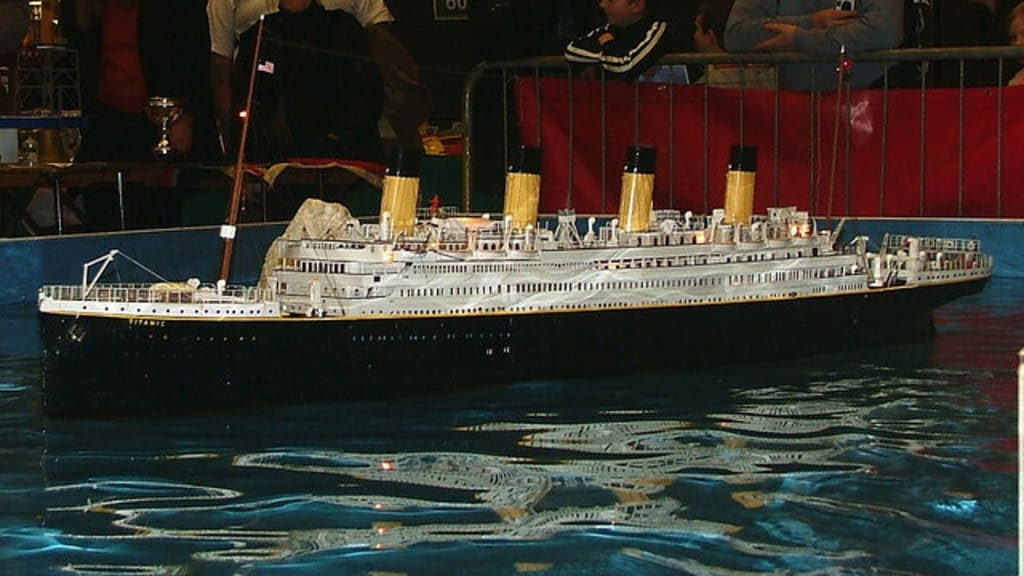No One Discusses the Tragic Shipwreck More Than the Titanic
Nobody Talks About the Tragedy Shipwreck More Talked About Than the Titanic

The Titanic disaster gained worldwide fame in large part because of claims that it was the most technologically advanced ship ever built, that it was unsinkable, and that when it sank, a movie was made about it. But sadly, the Titanic disaster was not the only significant shipwreck, and there have been cases much worse than the tragedy of the Titanic, one of which happened on April 27, 1865.
It was a pretty large wooden boat with three decks that was 260 feet long and 70 feet wide, almost twice the size of a basketball court. The ship could carry about 350 passengers, but on that unfortunate day, more than 2000 people were on it. On April 23, she was making a routine trip from New Orleans when it broke down. There was a problem with the boiler, so the vessel did not make it to St. Louis.
Captain Mason was afraid that his competitors would take the job so he decided to sail despite the malfunction the ship. He had patched up the holes in the boiler instead of a big repair and invited all the ex-prisoners on board. So there was a broken boiler, an excess number of passengers, a lack of lifeboats, and not the best river conditions.
Also, the captain refused to send the ex-prisoners to the hold so they were all with ordinary passengers. There were strong chances for a shipwreck, but the greedy desire to earn more money was stronger. The Sultana went on a voyage and sailed up the river for two days. At this time one of the biggest Mississippi floods in history began. the river overflowed its banks. Because of the flood with the water level rising several feet, all the trees on the shore disappeared and only the tops were sticking out of the water. The ship sailed opposite this powerful current making the boiler work too hard.
On the evening of April 26th, the Sultana arrived in Memphis, Tennessee and they loaded even more cargo including 120 tons of sugar and 200 passengers. She got incredibly heavy and around midnight, the ship continued its dangerous journey. The captain sailed to barges to load a shipment of coal. At 1 am, the vessel left the barge and at 2 am, the broken boiler, unable to withstand the load, suddenly exploded.
The Sultana was just seven miles north of Memphis. Few people survived that day. The problem was that passengers trying to escape from the fire jumped into a cold river with a strong current. According to a number of accounts, the Sultana disaster is regarded as the most catastrophic shipwreck in American history; the precise number of individuals who perished is still unclear. There were 961 to 1800 people in this number.
Don't be shocked that so few people are familiar with this tale. The Sultana sank during one high-profile event 12 days before the Titanic shipwreck. The nation lost Abraham Lincoln; people hadn't yet recovered from this news, so no one paid much attention to the tragedy of the Sultana. There were many more survivors in the Titanic tragedy, and everyone knew about it.
Many tragedies occurred recently by historical standards, but one of them happened in 2002. The Senegalese ferry called the Ferry Leluja, which carried people who traded mango and palm oil twice a week primarily along the coast of Dakar. It made daily voyages and never encountered serious problems, thanks to modern rescue tools and reliable repair services. But one day the ship's crew discovered a problem and sent the boat to port for nearly a year.
Ferry Leluja was only built for sailing in coastal waters. But that day it sailed far from the shore. Big waves started rocking the boat, and at some point, it just turned upside down. The ship's deck went underwater and its lower parts stuck above the surf. Leluja was supposed to carry about 500 passengers, but had many more people that day due to two crewmembers, poor repairs, and a strong storm.
The passengers had to wait over four days to be rescued even though the ocean was warm, and just a few of them made it out alive.
In the Philippines, which is made up of thousands of islands and a large area with shallow water, ships can run aground and sustain hull damage from reefs and pitfalls. A Philippine passenger ferry by the name of Dona Paz departed from one of the islands and headed toward Manila on September 20, 1987, when one of the worst accidents in navigation history occurred. The crew didn't notice how the tanker was approaching them despite the sun shining, the ocean being calm, and good visibility. The collision wasn't particularly strong because the two ships were traveling at modest speeds, but Vector's heavy cargo of oil and the heavy load contributed to the issue.
On September 27, 1854, the passenger ship Arctic sailed from Liverpool to New York when the fog rolled in and visibility got really bad. Another boat appeared out of the thick white Haze. The visibility got even worse when waves crashed into the cargo hold where that oil was stored, causing it to spill all over the ocean. Then a spark slipped through, and not only did the two ships catch fire, but also filled with water the both ships sank in a matter of seconds.
Only a few dozen people survived. The ships were close enough to each other that a collision was inevitable. The French vessel was smaller so it seemed to the Arctic's captain that Vector had received a lot of damage and while he was staring at the other ship, his boat got quickly filled with water. The order was made to sail to the shore as fast as possible, but the ship's engines stopped working.
Because of the flood, the ship's crew started to lower lifeboats with women and kids. Still, rescuers found lifeboats full of people. It turned out that only 87 out of 400 people survived, including the C5 crew members and 22 passengers.
Surprisingly, there were only grown men among the ship's passengers. The captain survived by clinging to the wreckage. All newspapers wrote about this story as one of the most terrible and shameful tragedies in navigation history. Survivors were criticized because they didn't save women and kids. And the crew members were accused of violating the law since the safety of passengers should be higher than the safety of sailors. But despite this, none of them took any responsibility for what had happened.
However, because of modern navigation systems and radar, there are fewer shipwrecks now than in the past. However, no technology in existence today can guarantee that there won't be a super-strong storm or any other emergency that no one can foresee.
About the Creator
Althea March
I am a writer who searches for facts to create compelling nonfictional accounts about our everyday lives as human beings, and I am an avid writer involved in creating short fictional stories that help to stir the imagination for anyone.
Enjoyed the story? Support the Creator.
Subscribe for free to receive all their stories in your feed. You could also pledge your support or give them a one-off tip, letting them know you appreciate their work.






Comments
Althea March is not accepting comments at the moment
Want to show your support? Send them a one-off tip.